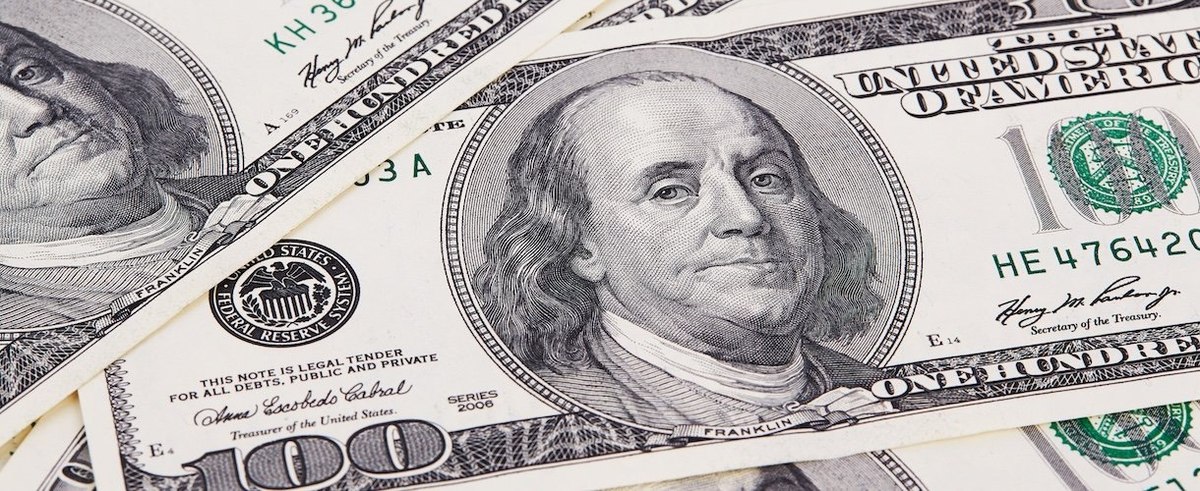In March, Senator Jeanne Shaheen introduced a bill calling for the United States to adopt a new design for the $20 bill that would feature Harriet Tubman. Shaheen's bill is the latest development in a movement dating to 2015 that calls for Tubman to replace Andrew Jackson on the $20 bill. This would mark the first new figure on the long-term design of a bill or coin in decades. Outside of commemorative coins, American money has not featured a new face since Sacagawea was selected to appear on the rarely used dollar coin in 1998.
Beyond the controversy surrounding whether Jackson or Tubman should be featured on the $20 bill, what do Americans think about the other figures that appear on the coins and bills they see each day? And are there other figures whom Americans would like to see on future designs? In a recent survey, we asked Americans whether they would support or oppose a new design for an American coin or bill featuring 40 figures: 13 who appear on a current or recent denomination, and 27 who don't. We found that there is a wide variety in support for the figures on current designs, and some get less support than some of the figures who aren't currently featured on U.S. money.
There’s a wide range in feelings about figures who currently appear on money
Americans aren't all about the Benjamins; more of them like the Abes and the Georges. Abraham Lincoln (who appears on the penny and the $5 bill) and George Washington (the quarter and the $1 bill) are the most popular figures who appear on money. About two-thirds of Americans would strongly or somewhat support a new design featuring each of these past presidents, while only 7% of Americans would oppose either design. Perhaps it’s appropriate then that Washington and Lincoln are the two figures who appear on both a coin and a bill.
Other popular figures include Lady Liberty (included on many dollar coins), John F. Kennedy (featured on the half dollar), and Benjamin Franklin (appears on the $100 bill, and perhaps deserves an apology for the start of this section). More than half of Americans would support a new design featuring each of these figures.
On the other hand, Americans are least likely to support designs featuring Andrew Jackson (31%) and Ulysses S. Grant (30%). Jackson draws the most opposition of any currently featured figure: 22% of Americans strongly or somewhat oppose a new design featuring him. Grant faces less opposition, but about half (53%) of Americans neither support nor oppose his inclusion or don’t know what to think of him.
Time for fresh faces?
In addition to asking about 13 figures who have appeared on current or recent American coins and bills, we also asked Americans if they would support or oppose a hypothetical design featuring each of 27 other potential figures. These 27 figures have either never appeared on money, or have only appeared on limited edition designs or commemorative coins. Of the figures asked about, 13 drew more support than both Jackson and Grant — the least popular figures who are currently featured on money — suggesting that there are many promising possibilities for redesigns of the $20 and $50 bills.
Among figures not currently on American money, Theodore Roosevelt and Martin Luther King, Jr. drew the most support: About half of Americans favor a design featuring each of them. Harriet Tubman, who has been the center of a push to replace Jackson on the $20 bill, draws slightly less support (43%). Other figures who garner more support than Grant and Jackson are civil rights leaders Rosa Parks and Frederick Douglass; scientists Albert Einstein, Thomas Edison, and George Washington Carver; political leaders Eleanor Roosevelt and Ronald Reagan; pioneers in air and space travel Neil Armstrong and Amelia Earhart; and Revolutionary War hero Paul Revere.
This list is not exhaustive, nor could it be: There may be some excluded figures whom large shares of Americans would like to see on money. Additionally, this survey only included figures who are dead — or, in the case of Lady Liberty, were never alive. Living people generally are not featured on American bills or coins, although rare exceptions have been made for commemorative designs.
Although more Americans support than oppose each of the 13 figures discussed above, two stand out as particularly controversial: Ronald Reagan (supported by 33% and opposed by 25%) and Albert Einstein (supported by 39% and opposed by 24%). Attitudes toward money featuring Reagan, the Republican former president, are highly polarized: There is strong support among Republicans and significant opposition among Democrats. Both Republicans and Democrats are more likely to support than oppose a design featuring Einstein, but support is more widespread among Democrats.
More Americans oppose than support money featuring nine of the 27 figures included in the survey who have never appeared on money. Americans are especially opposed to several recent figures in entertainment being featured on money. About half of Americans would oppose designs including each of Marilyn Monroe, Walt Disney, and Elvis Presley. There also is significant opposition to designs featuring Robert E. Lee, Johnny Appleseed, Malcolm X, Cesar Chavez, or Babe Ruth. A design featuring any of these figures would be opposed by more than one-third of Americans, and supported by substantially less.
Do red and blue agree about green?
While many figures see support from Americans across the political spectrum for appearing on money, others divide Democrats and Republicans.
Democrats are much more likely than Republicans to support designs featuring figures associated with the civil rights and abolitionist movements, such as King, Tubman, Parks, Douglass, Jackie Robinson, and Malcolm X. The same partisan divide applies to Miles Davis, another prominent Black American. Democrats also are more likely than Republicans to support figures who are women (Anthony, Eleanor Roosevelt, Sacagawea, and Amelia Earhart), indigenous Americans (Crazy Horse and Sacagawea), and Latinos (Chavez).
Republicans are more likely than Democrats to support designs featuring presidents. Jackson and Reagan draw the bulk of their support from Republicans, while Lincoln, Washington, Thomas Jefferson, and Theodore Roosevelt also are more likely to be supported by Republicans than Democrats. Republicans also are significantly more likely than Democrats to support designs featuring Robert E. Lee. However, more Republicans oppose a design featuring Lee than support one.
As demonstrated by the case of Lee, polarized attitudes do not necessarily mean that the majority of one party supports a figure and most of the other opposes it. While Lee gets more opposition than support among both parties, several polarizing figures have positive net support in both parties. King, Tubman, Anthony, and Eleanor Roosevelt are overwhelmingly supported by Democrats, but also see more Republican support than opposition. Similarly, Democrats are more likely to support than to oppose designs featuring Lincoln, Washington, Jefferson, and Theodore Rossevelt, even though these presidents get more support from Republicans.
Age gaps
There also are differences in support for some figures appearing on money based on age. Adults younger than 45 are more likely than older Americans to support designs featuring figures associated with civil rights (King, Parks, Malcolm X, Robinson, and Chavez). They also are more likely to support figures in entertainment (Monroe, Davis, Disney, Presley, and Mark Twain) and sports (Robinson and Ruth). Older Americans are disproportionately likely to support many of the figures who appear on current and recent denominations: Lady Liberty, Kennedy, Franklin, Jefferson, Dwight D. Eisenhower, Anthony, and Alexander Hamilton.
While adults under 45 disproportionately favor Sacagawea appearing on U.S. money, older Americans would be more likely to support a design featuring Lewis and Clark. This suggests a difference in how Americans of different ages think the country's westward expansion should be commemorated.
Today, younger adults are more likely than older ones to support several new figures appearing on U.S. money and less likely to support many existing designs. Future polls could show if today's younger adults retain their current preferences as they age, or if they'll grow more fond of familiar faces.
— Taylor Orth and Carl Bialik contributed to this article
See the results for this YouGov survey
Related articles and surveys:
- More Americans want to drop the penny than to save it
- Who should be memorialized with a statue in America?
- The most and least popular US presidents, according to Americans
- What do Americans think about the Civil War?
Methodology: This YouGov poll was conducted online on February 26 - 28, 2025 among 1,146 U.S. adult citizens. Respondents were selected from YouGov’s opt-in panel to be representative of adult U.S. citizens. The sample was weighted according to gender, age, race, education, 2024 presidential vote, 2020 election turnout and presidential vote, baseline party identification, and current voter registration status. Demographic weighting targets come from the 2019 American Community Survey. 2024 presidential vote, at time of weighting, was estimated to be 48% Harris and 50% Trump. Baseline party identification is the respondent’s most recent answer given around November 8, 2024, and is weighted to the estimated distribution at that time (31% Democratic, 32% Republican). The margin of error for the overall sample is approximately 4%.
Image: Getty (Yevgen Romanenko)













